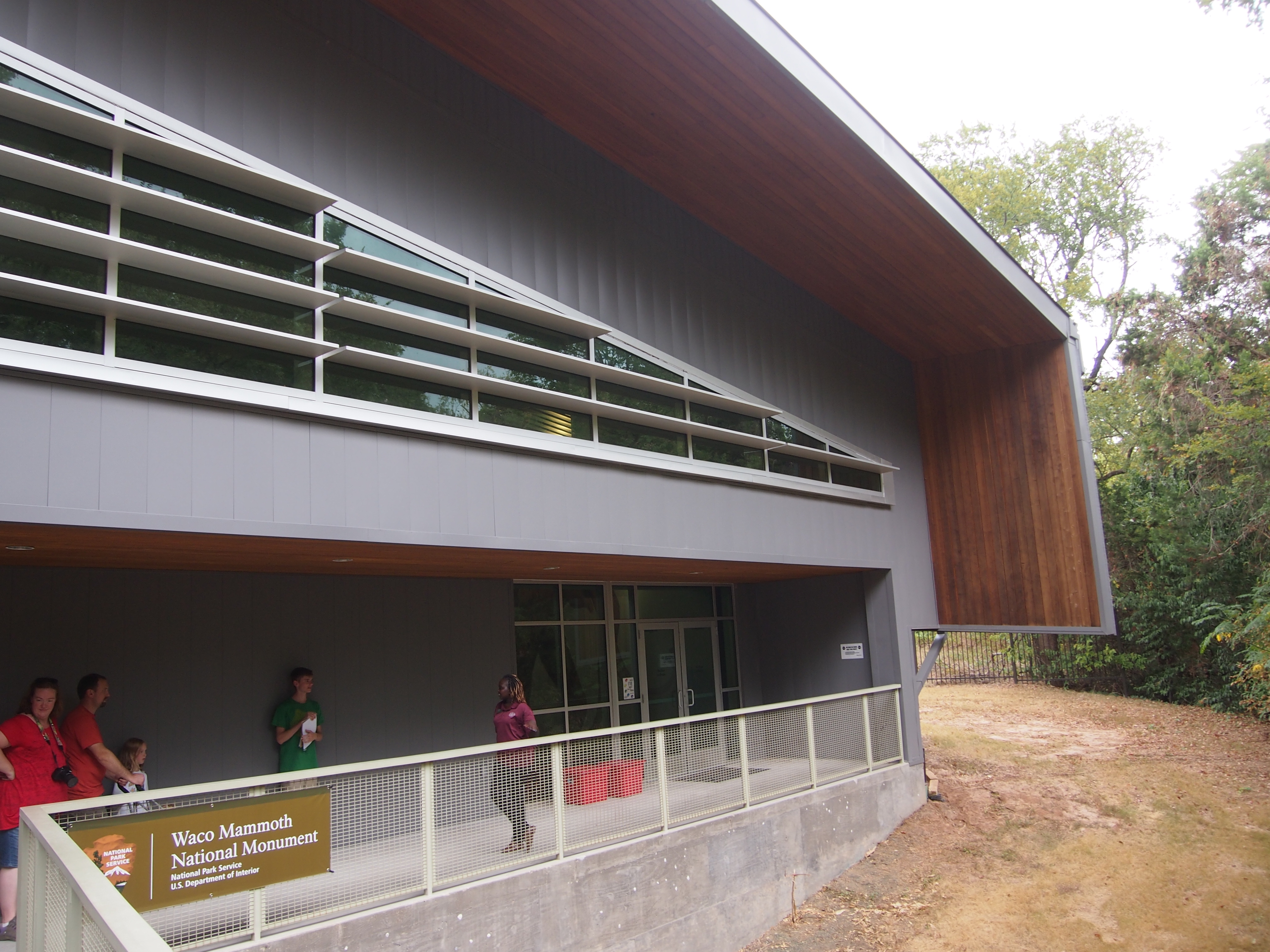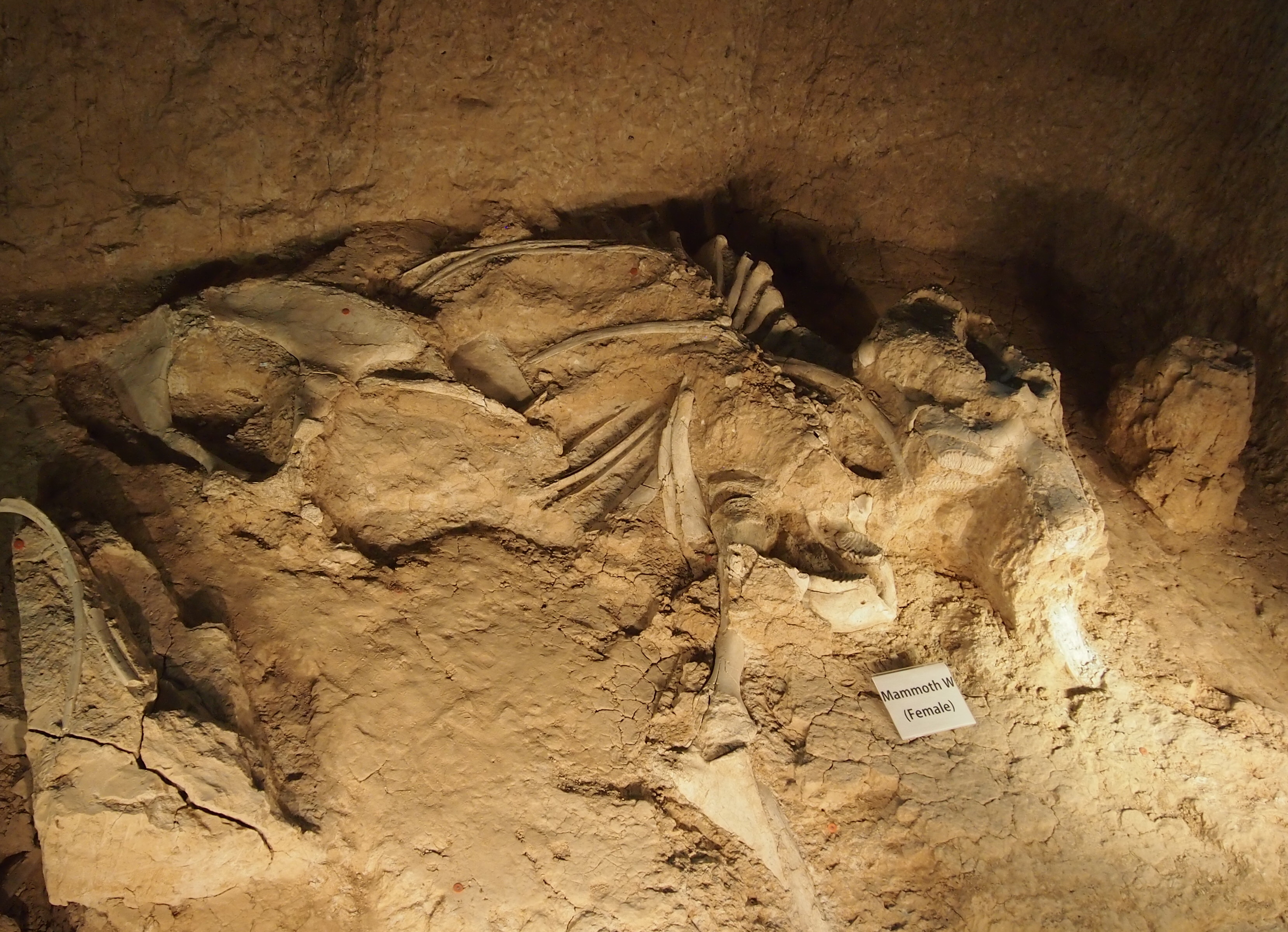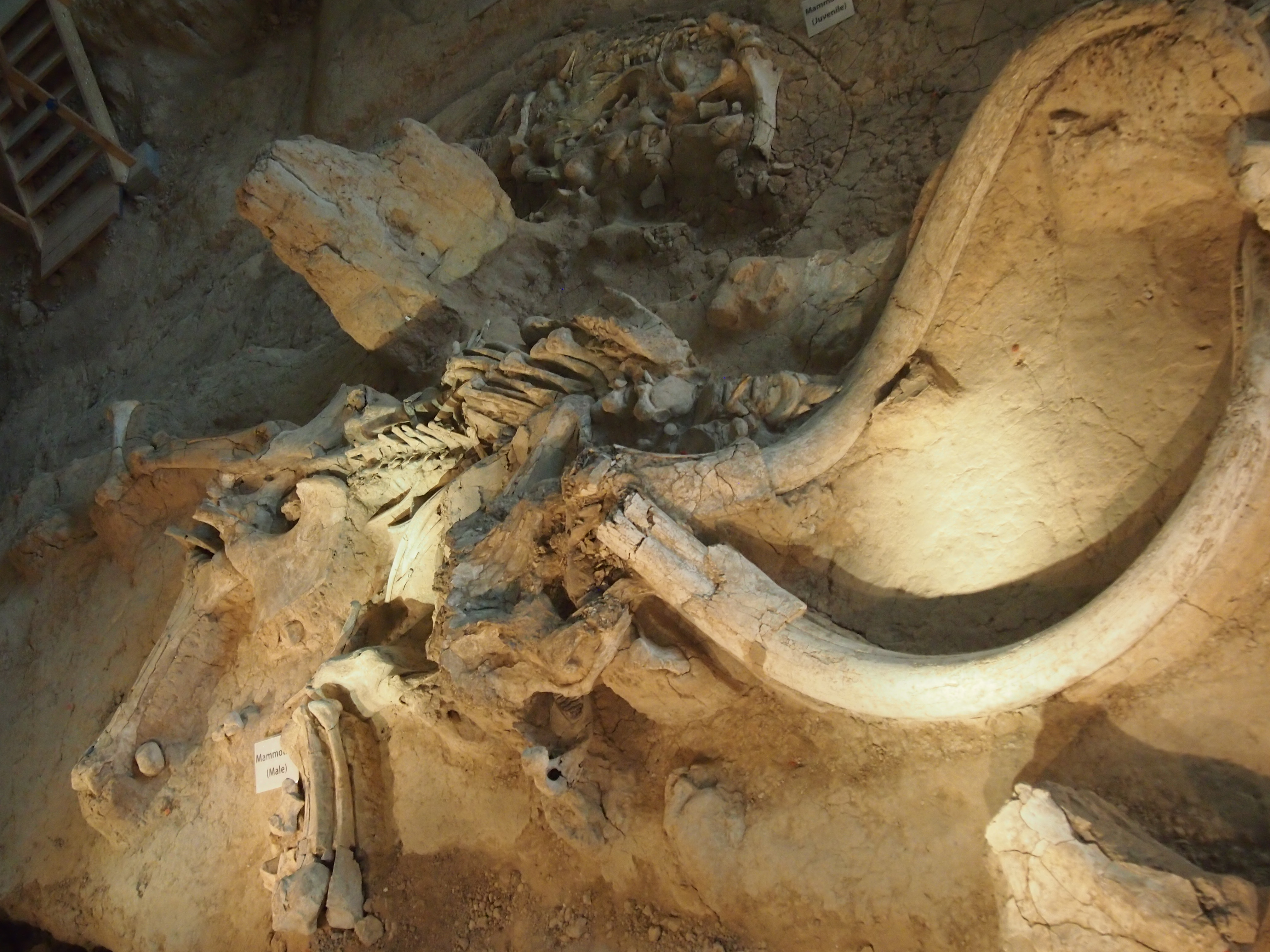In July, using his authority under the Antiquities Act of 1906, President Obama created three new national monuments on the same day, including ones in California and Nevada, but also Texas. In a place I pass through sometimes: Waco. The new Texas monument is the five-acre Waco Mammoth National Monument, though it’s been open to visitors since 2009.
The Washington Post notes that the “Waco Mammoth in Texas ranks as a major paleontological site, featuring well-preserved remains of 24 Columbian Mammoths. The mammoths date back more than 65,000 years, and the site includes the nation’s first and only recorded discovery of a nursery herd of mammoths.
“Rep. Bill Flores (R-Tex.) has sought to make the area a national monument through legislation, and the site has been developed and protected by the National Park Service, the City of Waco, Baylor University, and the Waco Mammoth Foundation.”
Jay and I arrived on the afternoon of the October 22, just in time to catch up with a tour of site — which is the only way to get into the locked building built over the diggings. The structure protects the fragile relics from the elements and wankers who would steal them.
 Inside the building is a wide walkway overlooking the diggings, with a few paintings to illustrate Columbian mammoths, who were not the better known cold-habitat woolly mammoths. Columbians were better suited to warmer weather, and Texas had a warmer climate even then.
Inside the building is a wide walkway overlooking the diggings, with a few paintings to illustrate Columbian mammoths, who were not the better known cold-habitat woolly mammoths. Columbians were better suited to warmer weather, and Texas had a warmer climate even then.
 Our guide, an affable young woman, told us about the diggings and the bones, using a laser pointer. The archaeological consensus is that floods trapped and drowned the luckless beasts. On view in situ are whole or nearly whole skeletons, including skulls, tusks, teeth, vertebrae, ribs, femurs and more.
Our guide, an affable young woman, told us about the diggings and the bones, using a laser pointer. The archaeological consensus is that floods trapped and drowned the luckless beasts. On view in situ are whole or nearly whole skeletons, including skulls, tusks, teeth, vertebrae, ribs, femurs and more.

 In our time, the first of the bones were only discovered in 1978, having been in the ground for between 65,000 and 72,000 years. A lot of the bones are now stored at the Mayborn Museum Complex in Waco, which is part of Baylor University. Other animals uncovered in the area included a Western camel (Camelops hesternus), dwarf antelope, American alligator, giant tortoise, and the tooth of a juvenile saber-toothed cat.
In our time, the first of the bones were only discovered in 1978, having been in the ground for between 65,000 and 72,000 years. A lot of the bones are now stored at the Mayborn Museum Complex in Waco, which is part of Baylor University. Other animals uncovered in the area included a Western camel (Camelops hesternus), dwarf antelope, American alligator, giant tortoise, and the tooth of a juvenile saber-toothed cat.